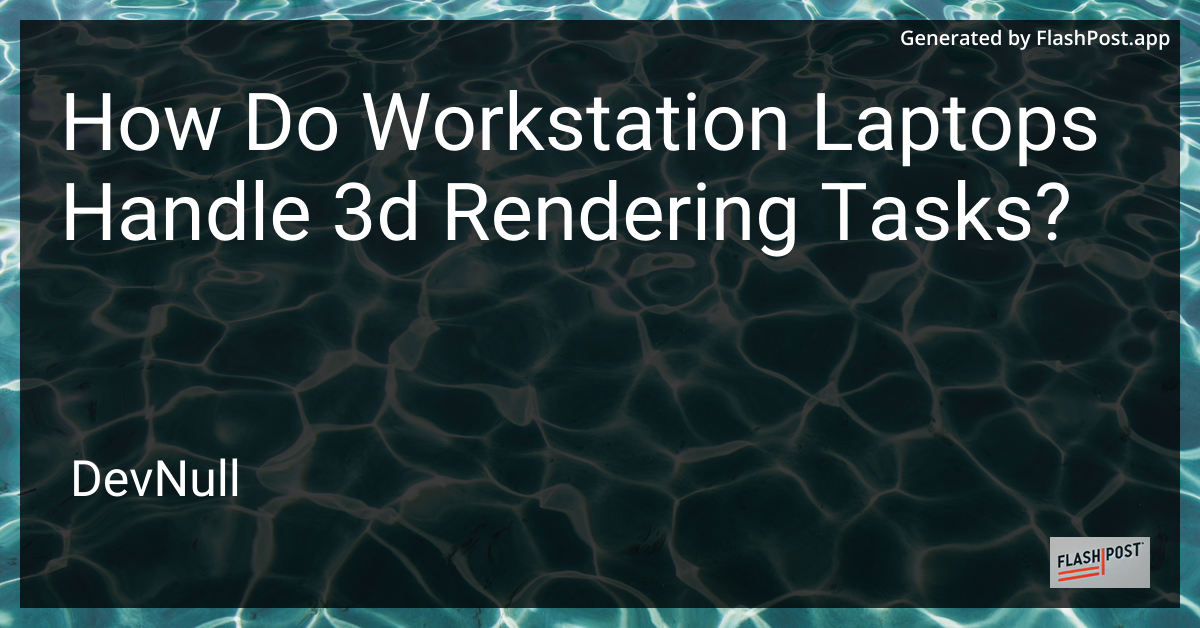

How Do Workstation Laptops Handle 3d Rendering Tasks?
3D rendering is a resource-intensive process that requires powerful computing hardware. Workstation laptops, specifically designed for such demanding tasks, have become essential tools for professionals in fields like graphic design, animation, architecture, and engineering. In this article, we dive into how workstation laptops handle 3D rendering tasks, ensuring high performance and efficiency.
What Makes Workstation Laptops Suitable for 3D Rendering?
1. Powerful Processors
Workstation laptops are equipped with high-performance processors, such as Intel Xeon or AMD Ryzen, that can handle multiple threads efficiently. This allows for faster computations and smoother rendering of complex 3D graphics. The ability to manage parallel processing is crucial when rendering multiple frames in animations or simulations.
2. Dedicated Graphics Cards
Unlike regular laptops, workstation laptops boast powerful dedicated graphics cards, often from NVIDIA Quadro or AMD Radeon Pro series. These GPUs are optimized for rendering tasks, offering superior performance with features like CUDA cores for NVIDIA or stream processors for AMD, which accelerate rendering times significantly.
3. Ample RAM and SSD Storage
Rendering large 3D models require a substantial amount of RAM. Workstation laptops usually come with 16GB to 64GB of RAM, which facilitates the smooth handling of large data sets. Additionally, SSD storage in these laptops provides rapid read/write speeds, reducing the time taken to load and save complex projects.
4. Thermal Management
3D rendering generates a significant amount of heat. Workstation laptops have advanced cooling systems to manage this thermal output, ensuring sustained performance without throttling, which is critical during prolonged rendering sessions.
Choosing the Right Workstation Laptop
When selecting a workstation laptop for 3D rendering, focus on the CPU and GPU specifications, RAM and storage capacity, display quality, and build durability. The choice often depends on the specific software requirements or the complexity of projects you typically handle.
Related Resources:
-
Explore affordable student laptops for those entering design fields who may need to upgrade later.
-
Consider the merits of design laptops with touchscreen capability if you’re integrating interactive elements in your work.
-
For those in technical fields, check out the best laptops for engineering students that also need efficient rendering capabilities.
Conclusion
Workstation laptops are indispensable for professionals engaged in 3D rendering tasks due to their robust processing power, high-end graphics capabilities, and efficient thermal management. As technology evolves, these devices continue to support the ever-growing demands of creative and technical industries, allowing designers, architects, and engineers to push the boundaries of what’s possible in digital rendering. Whether you’re a student or a seasoned professional, the right workstation laptop can be a vital partner in your creative journey.
